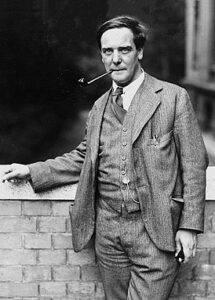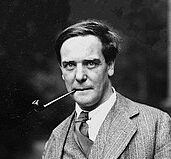Pyotr Kapitsa is a Soviet scientist, researcher and experimenter. He is the author of papers on quantum physics and low-temperature technologies, electronics and plasma physics. He invented a pulsed approach for creating ultra-strong magnetic fields. Petr Leonidovich devised and constructed equipment for chilling helium and came up with a way for liquefying air utilizing a turboexpander and low pressure. The contribution to research given by scientists cannot be overstated.
Childhood and youth
The future scientist was born in Kronstadt on July 8, 1894. His father worked as a military engineer and was involved in the construction of city defenses. Mother studied folklore and children’s literature. Peter started to school at the age of 11 and became a high school student. Latin turned out to be too challenging a topic for the pupil. The curriculum was rigorous, so after a year I had to quit the gymnasium.
Kapitsa went to the Kronstadt School to gain an education. Here things improved, and the young man completed his studies with honors, graduating in 1912. At first he planned to become a student at the Faculty of Physics and Mathematics of the State University in St. Petersburg, but the candidate did not pass the competition.
Then he shifted his focus to the Polytechnic Institute, where he easily joined the Faculty of Electromechanics. From the initial months, the outstanding pupil drew the eye of Professor Abram Ioffe. The teacher wanted to enlist Kapitsa to work in his own laboratory.
The mentor contributed to the growth of the protégé and enabled him move to Scotland in the summer of 1914. There the young guy got caught up in the First World War, which made it difficult to return to his birthplace.
Kapitsa ended up in Russia in November 1914. A year later, he volunteered and was named ambulance driver. In 1916, Peter was demobilized, and the student returned to St. Petersburg, where he immediately entered into work on experiments and lectures. The researcher’s initial article dates back to this time.
Scientific activity
Ioffe gave Kapitsa a position in his specialization even before defending his diploma. The prospective specialist was invited to the X-ray and Radiological Institute. This is how the physicist’s teaching career began. The professor advocated Kapitsa’s journey overseas to seek fresh information. But it wasn’t easy.
It was feasible to get abroad only with the support of Maxim Gorky in 1921. Kapitsa was transferred to Great Britain. He became an employee of the Cavendish Laboratory and was placed at the disposal of Ernest Resenford. A couple of months later, Pyotr Leonidovich was already an employee of Cambridge.
Here he earned power and respect. He began exploring superstrong magnetic fields and did the first experiments in this area. Among Kapitsa’s earliest efforts was a collaborative research with Nikolai Semenov , devoted to the study of the magnetic moment of an atom placed in a non-uniform magnetic field. The investigation culminated in the Stern-Gerlach experiment.
In 1922 he defended his PhD dissertation, and in 1925 he became deputy head of the laboratory for magnetic research. After 4 years, the researcher was made a member of the Royal Society of London. His committee financed the establishment of a unique laboratory for the scientist. The opening took occurred in 1933.
The major topic of work for Kapitsa at this time was the research of nuclear transition and radioactive decay. He designs apparatus for arranging strong magnetic fields and obtains exceptional results, beating the record of earlier tests numerous times. His merits and achievements were recognized by Lev Landau himself .
To continue his studies, Kapitsa needed to return to his hometown, as investigating low-temperature physics needs adequate circumstances. The Soviet government, which frequently gave permanent residence to the scientist, was ready to accept the physicist. But he placed a condition: moving overseas at his own request and at any moment.
In 1934, Pyotr Leonidovich and his wife visited their motherland, but upon leaving they learnt that his British visa had been canceled. Later, the physicist’s wife was permitted to leave for the children with the condition of required return. The lobbying of their British counterparts had little influence on the Soviet government. Kapitsa had to stay in the USSR.
In 1935, the physicist headed the Institute of Physical Problems at the Russian Academy of Sciences. The academician loved science so much that disappointment did not enable him to forsake his life’s work. He sought the equipment he had worked on in the UK. Resigned to what was happening, Rutherford was compelled to sell the technology to the USSR.
Kapitsa continued exploring high magnetic fields jointly with researchers from Cambridge. The trials persisted for several years. The labor paid off: Pyotr Leonidovich updated the turbine of the facility, and air liquefaction became more efficient.

The helium was automatically cooled in the expander. Similar equipment is employed in current production in all countries of the world. But the key finding, which became an important event in the physicist’s history and in science, was the phenomenon of helium superfluidity. The absence of viscosity of the material at temperatures below 2 degrees Celsius was an unexpected result. This is how the physics of quantum liquids appeared.
By this time, Kapitsa was the author of numerous books and a prominent scientist. The government took this into account while initiating the atomic bomb project and wanted to enlist Pyotr Leonidovich in collaboration. But he refused and was suspended from work. The sentence was home confinement for a long 8 years.
Kapitsa was banned to retain touch with his colleagues, but this did not stop him from building a new laboratory at his own dacha. Tests were carried out there that established the basis for research into high-power electronics. Kapitsa investigated thermonuclear energy. Experiments inside the confines of a professional laboratory were available to him only in 1955, after Stalin’s demise and the reinstatement of the academician’s regalia.
In those years, the earliest experiments were devoted to the research of high-temperature plasma. The scientist’s discoveries served as the basis for the building of a thermonuclear reactor. The physicist explored the characteristics of ball lightning and fluid hydrodynamics. But his primary interest was in microwave generators and plasma.
In 1965, Kapitsa won the Niels Bohr Medal for his contributions in science at a ceremony in Denmark. After 4 years, he had an opportunity to visit the USA, and in 1978 he discovered that he had become a Nobel laureate. Niels Bohr suggested the candidacy of Pyotr Leonidovich earlier: in 1948, 1956 and 1960. However, debates within the committee concerning the priority of findings did not make it feasible to win a well-deserved honor.
The reason for its presentation was study into low temperatures. Interesting fact: the scientist earned an award for a topic that he had not studied for more than 30 years, and his study on the thermonuclear reaction was more intriguing at that time. Therefore, when giving a lecture, the prize winner permitted him to alter the topic.
The name of Peter Kapitsa was given to the “Kapitsa pendulum”. This is a mechanical phenomena displaying stability outside of equilibrium circumstances. The Kapitsa-Dirac effect displays the scattering of electrons in the space of an electromagnetic wave.
Personal life
Pyotr Kapitsa was married for the first time in his youth, in 1916. The father of the chosen one, Nadezhda Chernosvitova, was a member of the Central Committee of the Cadet Party and a State Duma representative. In 1917, the wife gave birth to a boy, Jerome, and in 1920, a daughter, Nadezhda. It seemed that the physicist’s personal life was joyful, if not for a terrible event: his wife and children died unexpectedly. The cause of death was Spanish flu. Kapitsa faced the loss with hard and was able to overcome the sadness only owing to the aid of his mother.
In 1926, Alexey Krylov, a friend and coworker, introduced Kapitsa to his daughter Anna Krylova. The wedding went place a year later. The scientist has sons Sergei and Andrei with his new household. Both became physicists. Kapitsa’s second marriage became pleasant. He and his wife lived together for 57 years. Anna helped work on the texts, and following the scientist’s death she erected a museum at his house.
Pyotr Leonidovich loves to spend his leisure time playing chess. Interestingly, when working in England, he won the Cambridgeshire championship at this board game. The scientist did not shy away from working with his hands: he enjoyed to construct pieces of furniture and domestic goods, and was fond of mending timepieces. Pyotr Kapitsa conformed to the style that was fashionable in England. He enjoyed tobacco, wore tweed jackets and lived in an English-style home.
Pyotr Kapitsa had a rocky relationship with the Soviet administration, but had an unchanging attitude about what was happening in the political sphere and was honest in his remarks. Defending the opinions and reputation of imprisoned scientists, between 1934-1983 he constantly addressed letters to the authorities. Thanks to them, several scientists were liberated.
Death
The scientist did not survive few months before his 90th birthday. He died on April 8, 1984. The grave is located at the Novodevichy cemetery.

Pyotr Kapitsa recruited the country’s finest scientists to the institute of the USSR Academy of Sciences and contributed in the construction of a research center near Novosibirsk and the Moscow Institute of Physics and Technology. The installations he designed are employed in industry, and research connected to the extraction of liquid air has severely increased steel manufacturing in the USSR.
Kapitsa was opposed the establishment of a pulp and paper industry near Lake Baikal. The scientist served on the committee of the Pugwash movement for peace and disarmament, and urged the merger of scientists from the USSR and the USA.
For his efforts in the scientific sector, films were created about Kapitsa. In 2017, a film on physics, “The Experience of Comprehension of Freedom,” was released. His images are used in textbooks today.
